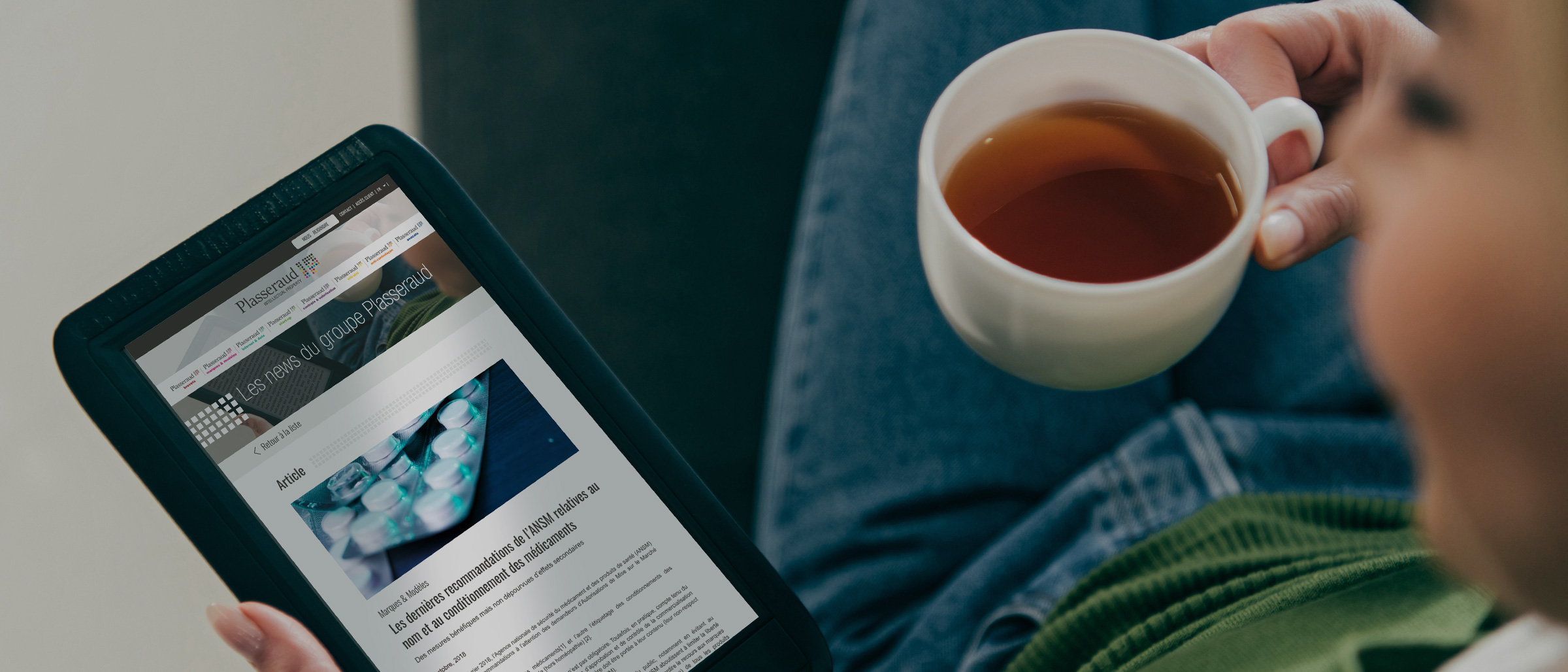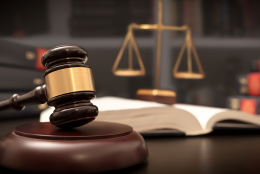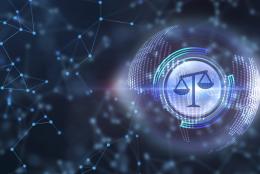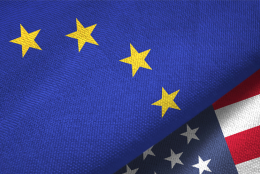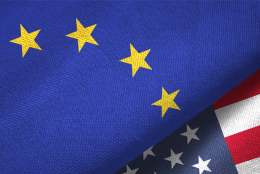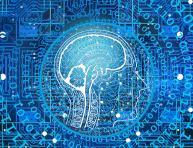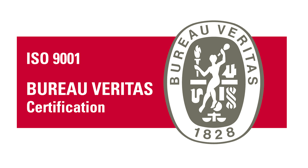Article

Patent eligibility for ArtificiaI Intelligence inventions in the United States
Artificial intelligence enables machines to learn from experience and mimic human behavior on specific tasks. The recent rise of AI is driven by huge amounts of available data, advanced machine learning algorithms, and developments in computing power and storage. Most AI examples rely on machine learning algorithms - most emblematic ones being deep learning algorithms - where models are trained to accomplish specific tasks by processing large amounts of data and recognizing patterns in the data.
Galileo believed that “Mathematics is the language with which God has written the Universe”. It is therefore not surprising that these machine learning algorithms are based on mathematical concepts.
Of course, the development of artificial intelligence resonates in the field of patents, as patent filings underwent a steady increase in the field of artificial intelligence from 2008 to 2014, with a sharp increase since 2014.
One might have thought that, since artificial intelligence techniques are mathematical and computational in nature, they would hardly be patentable. However, it is often possible to patent artificial intelligence inventions with a few precautions.
This article aims at reviewing the criteria of eligibility concerning AI-related patents in the United States and briefly underlining the differences between US and European patent practice.
1. Patent eligibility according to US law and the USPTO practice
According to US law, patents are granted for all new and useful inventions and discoveries. The subject matter of the invention or discovery must come within the boundaries set forth by 35 U.S.C. 101, which permits a patent to be granted only for "any new and useful process, machine, manufacture, or composition of matter, or any new and useful improvement thereof."
In 2019, the United States Patent & Trademark Office (USPTO) proposed a Revised Patent Subject Matter Eligibility Guidance (2019 PEG) to conduct subject matter eligibility test for patentable inventions.
These revised set of procedures elaborates the USPTO’s interpretation of 35 U.S.C. 101 by summarizing the substance of judgments given by the Supreme Court and the Federal Circuit in several patent cases (most importantly in the Alice V. CLS Bank International & Mayo V. Prometheus Laboratories) pertaining to subject matter eligibility and judicial exceptions.
The eligibility test, explained in more details in the Manual of Patent Examining Procedure (MPEP § 2106), is illustrated by the flowchart below and comprises three successive steps (Step 1, Step 2A, Step 2B) where the second step is divided in two prongs (Step 2A - 1st prong and Step 2 – 2nd prong).
The eligibility test starts from the “broadest reasonable interpretation” of the claims. During the patent examination at the USPTO, the Examiner determines the scope of a claim in a patent application not solely on the basis of the claim language, but upon giving the claims its broadest reasonable construction in light of the specification, as it would be interpreted by one of ordinary skill in the art.
Step 1 of the eligibility test consists in determining if the claim is directed to a process, machine, manufacture, or composition of matter. If the claim covers material not falling into any of the four statutory categories, that claim falls outside the scope of 35 USC 101 and is not eligible, even if the subject matter is otherwise new and useful.
Definitions of said categories are given by the case law (see Gottschalk V. Benson and Digitech image tech's V. electronics for imaging):
- a process defines "actions", i.e., an invention that is claimed as an act or step, or a series of acts or steps.
- a machine is a concrete thing, consisting of parts, or of certain devices and combination of devices,
- a manufacture is a tangible article that is given a new form, quality, property, or combination through man-made or artificial means,
- a composition of matter is a combination of two or more substances and includes all composite articles,
Step 2A aims to establish if the claim is directed to an unpatentable judicial exception, i.e. a law of nature, a natural phenomenon or an abstract idea. Step 2A is the first part of the Alice test, i.e. the Supreme Court’s framework for “distinguishing patents that claim laws of nature, natural phenomena, and abstract ideas from those that claim patent-eligible applications of those concepts” (Alice V. CLS Bank International).
Machine learning and software aspects of a claim may face an issue under 35 USC 101 based on the “abstract idea” exception.
For abstract ideas, the Examiners must determine whether the claim falls into at least one of three categories:
- mathematical concepts (mathematical relationships, mathematical formulas or equations, mathematical calculations)
- certain methods of organizing human activity (fundamental economic principles or practices, commercial or legal interactions, managing personal behavior or relationships or interactions between people) and
- mental processes (concepts performed in the human mind: encompassing acts people can perform using their mind, or using pen and paper).
Step 2A is a two-prong inquiry, in which examiners determine in prong 1 whether a claim recites a judicial exception, and if so, then determine in prong 2 if the recited judicial exception is integrated into a practical application of that exception. Features that are not claimed are irrelevant.
If the additional elements in the claim integrate the recited exception into a practical application of the exception, then the claim is not directed to the judicial exception and thus is eligible under 35 USC 101.
If, however, the additional elements do not integrate the exception into a practical application, then the claim is directed to the recited judicial exception and requires further analysis under Step 2B.
The PEG 2019 provides some examples of elements that do or do not integrate a judicial exception into a practical exception.
Examples of integrated exceptions into a practical application may for example include an improvement in the functioning of a computer, a particular treatment for a disease or medical condition, or an application of the judicial exception to a particular technological environment.
In the field of AI, such improvement to the functioning of the computer may for example be found in the choice of a specific model for a particular hardware implementation which leads to a technological improvement to the functioning of a computer.
On the contrary, the PEG 19 also identified examples that did not integrate a judicial exception into a practical application:
- merely including instructions to implement the abstract idea on a computer, or using the computer as a tool to perform an abstract idea,
- adding insignificant extra-solution activity to the judicial exception,
- generally linking the use of a judicial exception to a particular technological environment or field of use.
Step 2B constitutes the second part of the Alice test. In this step, the Examiner must determine if the claim recites additional elements that amount to significantly more than the judicial exception. This step is often referred to as a search for an inventive concept. An inventive concept can be found in the non-conventional and non-generic arrangement of known, conventional pieces. On the contrary, such inventive concept is not demonstrated if the invention simply appends well-understood, routine, conventional activities previously known to the industry, specified at a high level of generality.
The search for an inventive concept should not be confused with a novelty or non-obviousness determination over the prior art under 35 USC 102 and 35 USC 103.
Step 2B should be conducted by identifying whether there are any additional elements (such as features, limitations or steps) recited in the claim beyond the judicial exception(s), and then by evaluating those additional elements individually and in combination to determine whether they contribute to an inventive concept (i.e., if they amount to significantly more than the judicial exception(s)).
One may wonder if there are any patent eligibility considerations unique to AI inventions. The USPTO answered to this question in its recent report on artificial intelligence and intellectual property policy (Public Views on Artificial Intelligence and Intellectual Property Policy, October 2020) and explains that AI inventions are treated like all other inventions that come before the Office, by applying the Alice test to decide if the invention is patent-eligible under 35 USC 101.
The 2019 PEG applies to the Examiners of the USPTO and the Patent Trial and Appeal Board (PTAB) but does not bound courts (see In re Rudy).
2. Patent eligibility before US courts
The federal court system has three main levels: district courts (the trial court), circuit courts which are the first level of appeal, and the Supreme Court of the United States. Federal courts are courts of limited jurisdiction and have exclusive jurisdiction over patent infringement actions. Patent case appeals are heard by the Court of Appeals for the Federal Circuit (CAFC) and the Supreme Court hears appeals from the CAFC on a discretionary basis. The US has no district courts specialized in patent matters, although some district courts have more expertise with patent matters than others because patent matters arise more frequently in those jurisdictions.
The Patent Trial and Appeal Board (PTAB) has jurisdiction over certain inter partes proceedings, including interference and derivation proceedings and post-grant challenges to patents, such as inter partes reviews post-grant reviews and covered business method reviews. Decisions from the PTAB can be further appealed to the CAFC.
While PEG 19 has led to a significant improvement in the grant rate before the USPTO since 2019 for computer-implemented inventions, particularly in the field of AI, there is a risk of uncertainty as to the outcome of litigation before the district courts or the CAFC on the grounds of 35 US 101.
We will first look at the Alice case before commenting on some Federal Circuit decisions mentioning AI or related to inventions in the field of AI.
In Alice V. CLS Bank International (June 19, 2014), the Supreme Court analyzed claims related to computer systems, computer readable media, and computer-implemented methods, all of which described a scheme for mitigating "settlement risk," which is the risk that only one party to an agreed-upon financial exchange will satisfy its obligation. In part one of the Alice test (step 2A), the Court determined that the claims were directed to the abstract idea of mitigating settlement risk.
The Court then walked through part two of the Alice test (step 2B), in which:
- the Court identified the additional elements in the claim, by noting that the method claims comprises steps of using a computer to "create electronic records, track multiple transactions, and issue simultaneous instructions", and that the product claims comprises hardware features such as a "data processing system" with a "communications controller" and a "data storage unit"
- the Court considered the additional elements individually, noting that all the computer functions were "well-understood, routine, conventional activit[ies] previously known to the industry," each step "does no more than require a generic computer to perform generic computer functions", and the recited hardware was "purely functional and generic"
- the Court also considered the additional elements "as an ordered combination," and determined that "the computer components … add nothing … that is not already present when the steps are considered separately’" and simply recite intermediated settlement as performed by a generic computer."
Based on this analysis, the Court concluded that the claims amounted to "nothing significantly more than an instruction to apply the abstract idea of intermediated settlement using some unspecified, generic computer", and therefore held the claims ineligible because they were directed to a judicial exception and failed the second part of the Alice test.
It is interesting to see how the CAFC and district courts apply this two-step test since the Alice decision. Following Alice, this test has routinely been applied to analyze general software-related inventions. It is therefore not a surprise that these courts have applied this test to AI-related inventions.
The online case law databases reveal few cases from the CAFC involving 35 US 101 concerning AI-related patents.
In I/P Engine Inc. v. AOL Inc (August 15, 2014), the CAFC’s written opinions comprise a per curiam opinion, a concurring opinion and a dissenting opinion. A per curiam opinion is a judicial opinion issued under the name of the deciding appellate court and which does not identify the judge who wrote the opinion. A concurring opinion is the separate judicial opinion of an appellate judge who voted with the majority but who may discuss parts of the decision in which the appellate judge had a different rationale. A dissenting opinion is the separate judicial opinion of an appellate judge who disagreed with the majority’s decision and which explains the disagreement.
In the per curiam opinion, the non-obviousness (35 USC 103) of the claims was discussed by the court. In the concurring opinion, Judge Mayer considers that the claims asserted by I/P Engine disclose no new technology, but instead simply recite the use of a generic computer to implement a well-known and widely-practiced technique for organizing information, so that these claims fall outside the ambit of 35 USC 101.
More particularly, Judge Mayer stated that:
- the use of search engines was well-established and the clear advantages of combining content-based and collaborative filtering were widely recognized at the time of the claimed invention, and
- the scope of the claimed invention is staggering, potentially covering a significant portion of all online advertising.
The specification of the asserted patents also describes "a variety of ways in which content and collaborative feedback data can be combined, including through the use of a complex neural network function." However, the important inquiry for a 35 USC 101 analysis is to look at the claims. The complexity of the implementing software or the level of detail in the specification does not transform a claim reciting only an abstract concept into a patent-eligible system or method.
In addition, Judge Mayer considered that until it is determined that claimed subject matter is even eligible for patent protection, a court has no warrant to consider subordinate validity issues such as non-obviousness under 35 US.C 103 and that addressing eligibility requirement under 35 USC 101 at the outset of litigation can save a vast amount of time.
In Smart Systems Innovation LLV v. Chicago Transit Authority (October 18, 2017) a panel in the CAFC decided a case which affirmed that a series of four patents covering mass transit technologies are invalid under 35 U.S.C. § 101. Judge Linn wrote in a dissenting opinion that despite the number of cases that have faced the question of eligibility according to the Alice test and attempted to provide a practical clearance, great uncertainty yet remains. Judge Linn also argues that “the danger of getting the answers to these questions wrong is greatest for some of today’s most important inventions in computing, medical diagnostics, artificial intelligence, the Internet of Things, and robotics, among other things”.
Also, in Athena Diagnostics Inc v Mayo Collaborative Services (July 3, 2019), the CAFC issued a per curiam order denying a petition for rehearing en banc in a case involving claims directed to a “method for diagnosing neurotransmission or developmental disorders”. In the per curiam opinion, the court points out that it is bound by the Supreme Court decision in Mayo and must hold the claims ineligible. The court also admits that some of the Judges already expressed concerns over current precedent. Judge Moore, writing in dissent, cited the following passage of a subcommittee on Intellectual Property hearing: “Confusion about what is patent-eligible discourages inventors from pursuing work in certain technology areas, including discovering new genetic biomarkers and developing diagnostic and artificial intelligence technologies. This uncertainty disincentivizes the enormous investment in research and development that is necessary to fuel the innovation cycle.”
It is interesting to note that, in this decision, the 12 judges panel split 8 different ways, indicating a clear disagreement on how the eligibility-patents should be approached.
In In Re: Board of Trustees of the Leland Stanford Junior University, the CAFC also affirmed a decision of the PTAB by holding that some claims related to genetic inheritance data analysis are drawn to abstract mathematical calculations, statistical modeling, and similar subject matter that is not patent eligible.
The concerned claims included receiving various types of genetic data, using a machine learning model (e.g., a Hidden Markov Model) to determine an inheritance state, and determining a haplotype phase based on the genetic data and calculated inheritance state.
According to the PTAB and the CAFC, the use of a Hidden Markov Model and corresponding algorithm for performing calculations was directed to abstract mathematical calculations and statistical modeling. Stanford argued that the claims at issue were not directed to an abstract idea, in part, because the steps “enabled scientists to ascertain more haplotype information than was previously possible.” The Court was not persuaded by such argument.
In second step of Alice test, the Court concluded that the claims lacked “an improvement on a technological process”. More particularly, the Court reasoned that “simply storing information and providing it upon request does not alone transform the abstract idea into patent eligible submit matter.” The claims also failed to recite, or result in, “a specialized computer or a computer with a specialized memory or processor”. The court therefore concluded that the subject matter of the concerned claims is not patent-eligible under 35 US 101.
Since the Alice decision, both the CAFC and the district courts seem to struggle to apply the Alice test. In addition, since then, the Supreme Court has always denied certiatori - a court process to seek judicial review of a decision of a lower court, here the CAFC - on this 35 USC 101 issue.
The issue of patent eligibility continued to be the focus of much discussion and debate.
More recently, in the case Yu v. Apple Inc. (June 11, 2021), claim 1 of the patent was directed to an improved digital camera comprising two sensors and two lens, an analog-to-digital converting circuitry, an image memory and a digital image processor producing a resultant image from said first image enhanced with said second image. The CAFC affirmed that the claims at issue are merely “directed to the abstract idea of taking two pictures (which may be at different exposure) and using one picture to enhance the other in some way”.
In dissent, Judge Newman explains “This camera is a mechanical and electronic device of defined structure and mechanism; it is not an ‘abstract idea.’ . . . Claim 1 is for a digital camera having a designated structure and mechanism that perform specified functions; claim 1 is not for the general idea of enhancing camera images. The camera of the ’289 patent may or may not ultimately satisfy all the substantive requirements of patentability, for this is an active field of technology. However, that does not convert a mechanical/electronic device into an abstract idea.”
Newman’s dissenting opinion also commented 35 USC 101 jurisprudence:
“In the current state of Section 101 jurisprudence, inconsistency and unpredictability of adjudication have destabilized technologic development in important fields of commerce. Although today’s Section 101 uncertainties have arisen primarily in the biological and computer-implemented technologies, all fields are affected. The case before us enlarges this instability in all fields, for the court holds that the question of whether the components of a new device are well-known and conventional affects Section 101 eligibility, without reaching the patentability criteria of novelty and nonobviousness.
The digital camera described and claimed in the ’289 patent is a mechanical/electronic device that easily fits the standard subject matter eligibility criteria. Neither the panel majority nor the district court decided patentability under Section 102 or Section 103, having eliminated the claims under Section 101. The ’289 claims warrant review under the substantive criteria of patentability—a review that they have never received.
The fresh uncertainties engendered by the majority’s revision of Section 101 are contrary to the statute and the weight of precedent, and contrary to the public’s interest in a stable and effective patent incentive.”
Consequently, the eligibility uncertainty seems to be now extended to all fields of technology.
American Axle & Mfg v. Neapco Holdings LLC is also an illustration where the jurisprudence on eligibility under 35 USC 101 is applied to a traditionally patent-eligible subject matter: a method of producing shaft assembled in a driveline system for trucks having reduced vibration during use.
An en banc session is a session in which a case is heard before all the judges of a court rather than by one judge or a panel of judges selected from them. CAFC sometimes grants rehearing en banc, to reconsider the decision of a panel of the court (consisting of only three judges) in which the case concerns a matter of exceptional public importance or the panel's decision appears to conflict with a prior decision of the court.
In addition, the decision not to grant rehearing en banc was accompanied with various concurring and dissenting opinions.
After rehearing, CAFC affirmed in its July 31, 2020 modified opinion that the asserted claims are ineligible under 35 USC 101.
American Axle & Manufacturing filed a petition for certiorari with the US Supreme Court on December 28, 2020 and the Supreme Court requested the view of the Solicitor General (SG) in its consideration of the certiorari petition. Receiving the SG’s views may however take few to several months.
Also, former USPTO director, former Federal Circuit Chief Judge and a Senator jointly filed an amicus brief arguing that the disparate and inconsistent application of 35 USC 101 has led to unpredictability and instability.
The U.S. Supreme Court declined several times to hear patent eligibility cases in 2020. Will 2021 be the year that the Supreme Court finally addresses the topic, or will the Court continue to decline the petitions?
In addition, on May 22, 2021, a group of representatives and senators proposed to amend the Patent Act. Among other things, the proposal would eliminate the term “new” in Section 101 to clarify the situation between novelty and subject-matter eligibility.
Discussion
Before Alice, the question of eligibility under 35 USC 101 was rarely an obstacle to the granting of software patents in the United States, the main issues being those of the other main criteria of patentability, namely novelty, inventive step and enablement requirement.
Since Alice, eligibility has become a hurdle difficult to overcome and its contours remain unclear, even after several years of successive decisions. These decisions have progressively enlarged the space of ineligible subject matter and have not failed to arouse strong emotions among industrial property practitioners.
It will be necessary to wait a little longer to know if the Supreme Court intends to revisit the issue of eligibility and, if it does, what will be the consequences.
Obviously, the answers that could be given will not only concern software inventions in general, but also those in the field of artificial intelligence.
Comparatively, in Europe, the so-called "two hurdle" approach proposes a first barrier that can be easily overcome due to the "one hardware approach " or “HITACHI approach”, since the mere citation of a computer for example is sufficient to make the claim eligible under Article 52 EPC.
However, it is of course not possible to obtain a European patent for any bogus computer-implemented invention. The debate is shifted to the inventive-step requirement by the so-called COMVIK approach which states that inventive step must be based on those features of an invention which contribute to the technical solution of a technical problem by providing a technical effect. Features that do not make such a contribution to the technical character of an invention shall not support the presence of an inventive step.
Even in Europe, it is however not always easy to establish the boundaries between “technical” and “non-technical” features, as no legal definition is given in the European Patent Convention, in the guidelines or in the case law.
It seems desirable that European and American legislation and jurisprudence continue to evolve in order to fully embrace actual and further technological developments, particularly artificial intelligence-related inventions, and to avoid further destabilization of technologic and industrial developments.












